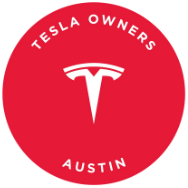The global electrification race is heating up as companies make significant commitments to electric vehicles. Not only are automakers diving into the electric vehicle market, but rental car companies and ride-hail fleets are also joining the movement. However, this race is not just about who can make the biggest commitment, but also about who can sustain it in the long run.
One company that is firmly committed to transitioning to all-electric vehicles is Uber. The ride-hail company has set a goal to operate all-electric fleets in the U.S. and Canada by 2030. At the World Economic Forum in Davos, Switzerland, Uber CEO Dara Khosrowshahi reaffirmed the company’s dedication to an all-electric future.
Khosrowshahi highlighted the rapid adoption of electric vehicles among Uber drivers, stating that they are transitioning to EVs five times faster than the average driver. This shift is not only environmentally friendly but also cost-effective for drivers, as EVs have lower overall running costs.
Uber’s commitment to an all-electric future extends to its drivers as well. Khosrowshahi announced that by the end of the decade, all Uber drivers operating gas-powered vehicles would not be allowed on the platform. This move is part of Uber’s strategy to promote sustainability and reduce greenhouse gas emissions.
Despite these ambitious goals, there are challenges ahead. The cost of EVs remains a barrier for many drivers, and the market for affordable electric options is still limited. However, initiatives like New York City’s Green Rides Initiative are paving the way for increased EV adoption in the rideshare industry.
Khosrowshahi emphasized the importance of affordable EV options and highlighted China as a leader in this area. He also criticized recent executive orders that could hinder the growth of the EV market, pointing out that affordable EVs are crucial for mass-market adoption.
In conclusion, Uber’s commitment to an all-electric future is a significant step towards reducing emissions and promoting sustainability in the transportation industry. However, overcoming challenges such as cost barriers and market limitations will require collaboration and innovation from all stakeholders involved. The CEO of a global company recently highlighted the challenges facing the United States in terms of climate commitment, but expressed optimism about progress in Europe. Speaking at the World Economic Forum in Davos, he emphasized the importance of Europe’s dedication to climate action and sustainability.
“It’s not good in the U.S., but we’re a global company… one of the reasons why we came here to Davos is [that] Europe is still committed to the climate,” he stated. He acknowledged the difficulties faced in the U.S. but remained hopeful about the potential for more significant advancements in electrified fleets outside the country, particularly in Europe. He emphasized that from the company’s perspective, this focus on sustainability in Europe is a positive development.
The CEO also touched on the future of ride-hail services and the role of autonomous driving technology. Reflecting on Uber’s previous efforts to develop driverless cars internally, he noted the challenges and setbacks the company faced in the past. However, he mentioned that Uber is now working with partners like Google’s Waymo and other companies to progress towards a driverless future.
Looking ahead, he predicted that autonomous vehicle software would become a standard feature in all cars sold within the next decade. He further suggested that autonomous drivers could eventually outperform human drivers in terms of safety and efficiency. Addressing concerns about potential job displacement for Uber drivers, he reassured them that there would be opportunities for collaboration between autonomous vehicle companies and ride-hail services in the future.
These bold predictions underscore the rapidly evolving landscape of transportation technology and the potential for significant changes in the industry. While challenges and uncertainties remain, the CEO’s remarks reflect a sense of optimism and determination to drive progress towards a more sustainable and efficient future in transportation. As developments in electric vehicles and autonomous driving continue to unfold, it will be interesting to see how these predictions align with the realities of the evolving market.

